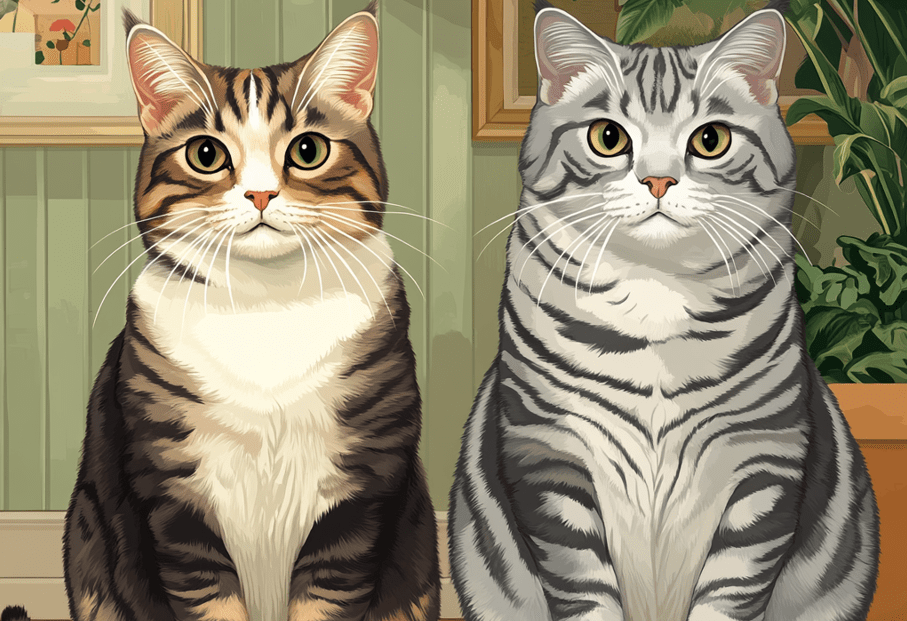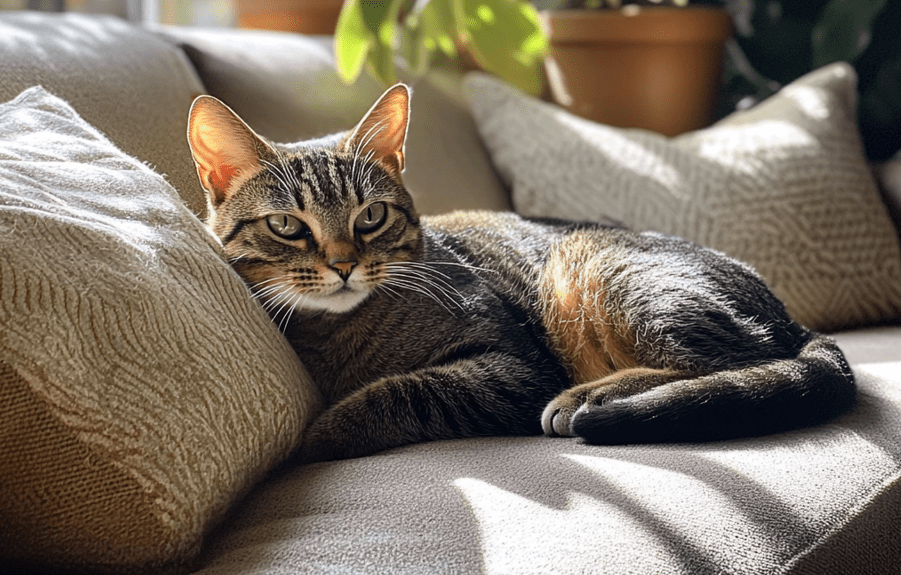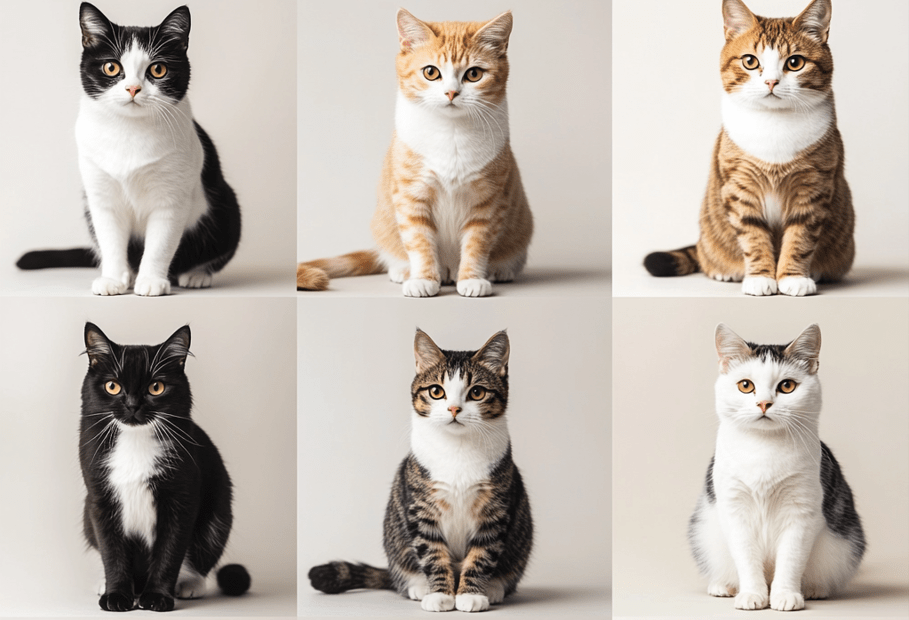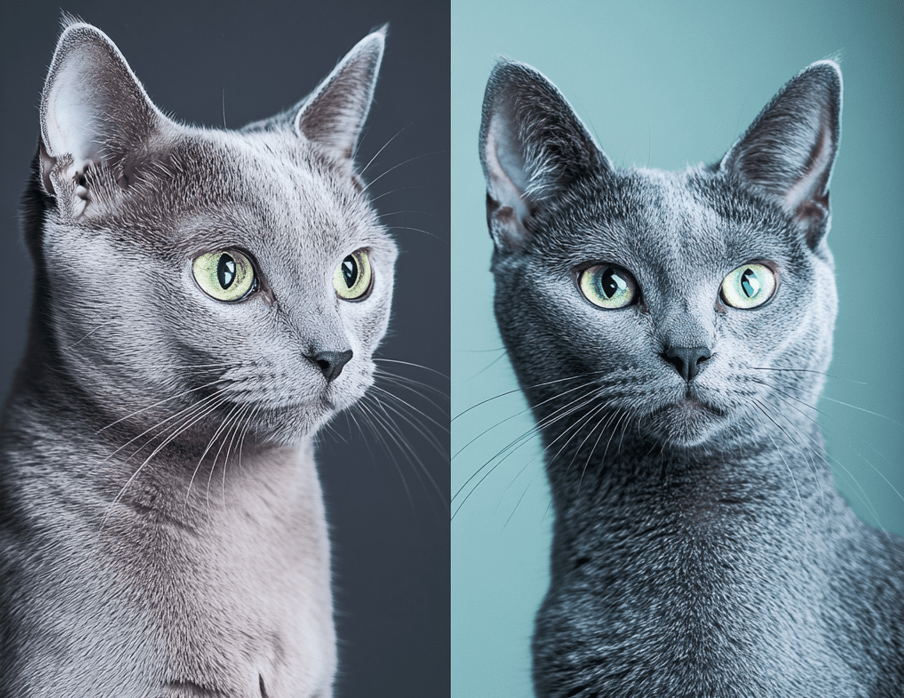
Urinary tract issues can be a serious concern for Domestic Shorthair cats, one of the most common and beloved feline breeds. Known for their playful nature and diverse coat patterns, Domestic Shorthairs are prone to conditions like urinary tract infections (UTIs), bladder stones, and feline lower urinary tract disease (FLUTD). These issues can cause discomfort and, if untreated, lead to severe health complications. This comprehensive guide will help cat owners recognize the signs of urinary tract problems, understand their causes, and take proactive steps to prevent them, ensuring their Domestic Shorthair thrives.
Understanding Urinary Tract Issues in Domestic Shorthairs
The urinary tract in cats includes the kidneys, ureters, bladder, and urethra. When any part of this system is disrupted, it can lead to painful and potentially dangerous conditions. Domestic Shorthairs, like other breeds, are susceptible to a range of urinary problems, including:
Urinary Tract Infections (UTIs): Bacterial infections that irritate the bladder or urethra.
Bladder Stones (Uroliths): Hard mineral deposits that form in the bladder, causing blockages or irritation.
Feline Lower Urinary Tract Disease (FLUTD): A group of conditions affecting the bladder and urethra, including inflammation, crystals, and stress-related issues.
Urethral Obstruction: A life-threatening condition where the urethra becomes blocked, preventing urination.
While these conditions can affect any cat, Domestic Shorthairs may be at higher risk due to genetic predispositions, diet, or environmental factors. Understanding these risks is the first step to keeping your cat healthy.
Why Are Domestic Shorthairs Prone to Urinary Tract Issues?
Several factors make Domestic Shorthairs susceptible to urinary tract problems:
Genetics: Some Domestic Shorthairs inherit traits that predispose them to forming bladder stones or crystals.
Diet: Poor-quality diets low in moisture or high in certain minerals can contribute to urinary issues.
Dehydration: Cats that don’t drink enough water produce concentrated urine, increasing the risk of crystal formation.
Stress: Domestic Shorthairs are sensitive to changes in their environment, and stress can trigger FLUTD.
Obesity: Excess weight can exacerbate urinary problems by putting pressure on the bladder or reducing activity levels.
Litter Box Issues: A dirty or inaccessible litter box may cause cats to hold their urine, leading to infections or irritation.
By addressing these factors, you can significantly reduce your cat’s risk of developing urinary tract issues.
How to Spot Urinary Tract Issues in Domestic Shorthairs
Early detection is critical for managing urinary tract problems. Domestic Shorthair owners should watch for these warning signs:
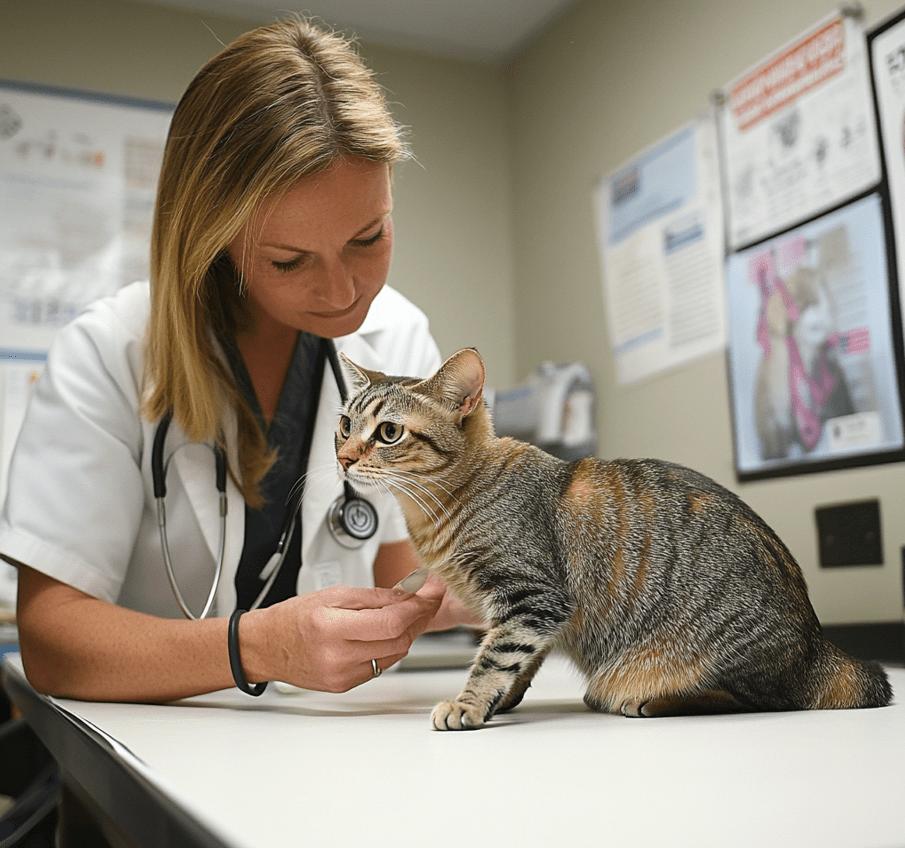
1. Changes in Urination Habits
Frequent Urination: Your cat may visit the litter box more often but produce only small amounts of urine.
Straining to Urinate: Cats may crouch for long periods or cry out in pain while trying to urinate.
Inability to Urinate: A complete inability to pass urine, especially in male cats, is a medical emergency requiring immediate veterinary attention.
2. Abnormal Urine
Blood in Urine (Hematuria): Pink, red, or brown urine is a red flag for infection, stones, or inflammation.
Cloudy or Foul-Smelling Urine: These can indicate a bacterial infection.
Urine Crystals: Visible grit or sand-like particles in the urine may point to crystal formation.
3. Behavioral Changes
Lethargy: A cat with urinary discomfort may become withdrawn or less active.
Irritability or Aggression: Pain can make even the friendliest Domestic Shorthair grumpy.
Excessive Grooming: Cats may lick their genital area excessively due to irritation.
4. Urinating Outside the Litter Box
Inappropriate Urination: Cats with urinary issues may avoid the litter box and urinate on carpets, furniture, or other surfaces.
Spraying: Stress-related urinary problems can lead to marking behaviors.
5. Physical Symptoms
Abdominal Pain: Your cat may flinch when you touch their belly or show signs of discomfort.
Vomiting or Loss of Appetite: Systemic illness from urinary issues can cause nausea or refusal to eat.
If you notice any of these symptoms, contact your veterinarian immediately. Quick action can prevent complications like kidney damage or life-threatening blockages.
Diagnosing Urinary Tract Issues
Veterinarians use several methods to diagnose urinary problems in Domestic Shorthairs:

Physical Exam: Checking for pain, bladder size, or abnormalities.
Urinalysis: Testing urine for blood, bacteria, crystals, or pH imbalances.
Blood Tests: Assessing kidney function and overall health.
Imaging: X-rays or ultrasounds to detect bladder stones or blockages.
Culture Tests: Identifying specific bacteria in cases of suspected UTIs.
Accurate diagnosis is essential for tailoring treatment to your cat’s needs.
Treatment Options for Urinary Tract Issues
Treatment depends on the specific condition but may include:
1. Medications
Antibiotics: To treat bacterial infections like UTIs.
Pain Relievers: To ease discomfort during recovery.
Anti-Inflammatory Drugs: To reduce bladder inflammation in FLUTD cases.
Urinary Acidifiers or Alkalizers: To dissolve certain types of crystals or stones.
2. Dietary Changes
Prescription Diets: Veterinary diets like Hill’s c/d or Royal Canin Urinary SO help dissolve stones, reduce crystal formation, and promote urinary health.
Increased Moisture: Wet food or water fountains encourage hydration, diluting urine and flushing the bladder.
3. Surgery
Stone Removal: Large bladder stones may require surgical intervention.
Perineal Urethrostomy (PU): In severe cases of recurrent blockages, this procedure widens the urethra in male cats to prevent obstructions.
4. Catheterization
For Blockages: A catheter may be used to relieve urethral obstructions, often under sedation.
5. Stress Management
Environmental Enrichment: Toys, scratching posts, and safe spaces reduce stress-related FLUTD.
Pheromone Therapy: Products like Feliway can calm anxious cats.
Routine Stability: Consistent feeding, playtime, and litter box maintenance help prevent stress.
Your veterinarian will create a treatment plan tailored to your Domestic Shorthair’s condition, ensuring the best outcome.
How to Prevent Urinary Tract Issues in Domestic Shorthairs
Prevention is the best way to protect your Domestic Shorthair from urinary tract problems. Here are actionable steps to keep your cat healthy:
1. Optimize Their Diet
High-Quality Food: Choose a balanced diet formulated for urinary health, with controlled levels of magnesium, phosphorus, and calcium.
Wet Food Preference: Wet food increases moisture intake, reducing urine concentration.
Avoid Overfeeding: Maintain a healthy weight to prevent obesity-related complications.
2. Encourage Hydration
Fresh Water Access: Provide clean water in multiple locations around the house.
Water Fountains: Cats are attracted to running water, which encourages drinking.
Flavoring Water: A splash of tuna juice or broth can entice picky drinkers (consult your vet first).
3. Maintain a Clean Litter Box
Daily Scooping: Remove waste promptly to encourage regular use.
Multiple Boxes: Provide one box per cat, plus an extra, in quiet, accessible locations.
Unscented Litter: Cats prefer fragrance-free, clumping litter that mimics natural textures.
4. Reduce Stress
Safe Spaces: Create cozy hiding spots or perches where your cat can relax.
Playtime: Engage your Domestic Shorthair with toys like feather wands or laser pointers to burn off energy.
Gradual Changes: Introduce new pets, people, or routines slowly to avoid anxiety.
5. Regular Veterinary Checkups
Annual Exams: Routine vet visits catch early signs of urinary issues before they escalate.
Urine Tests: Periodic urinalysis can detect crystals or infections early.
Weight Monitoring: Keep your cat’s weight in check to avoid strain on the urinary system.
6. Spay/Neuter Your Cat
Spaying or neutering reduces the risk of certain urinary issues, like stress-related FLUTD, and promotes overall health.
By incorporating these habits, you can minimize the chances of urinary tract problems and help your Domestic Shorthair live a long, happy life.
Common Myths About Urinary Tract Issues in Cats
Misinformation can lead to confusion, so let’s debunk some myths:
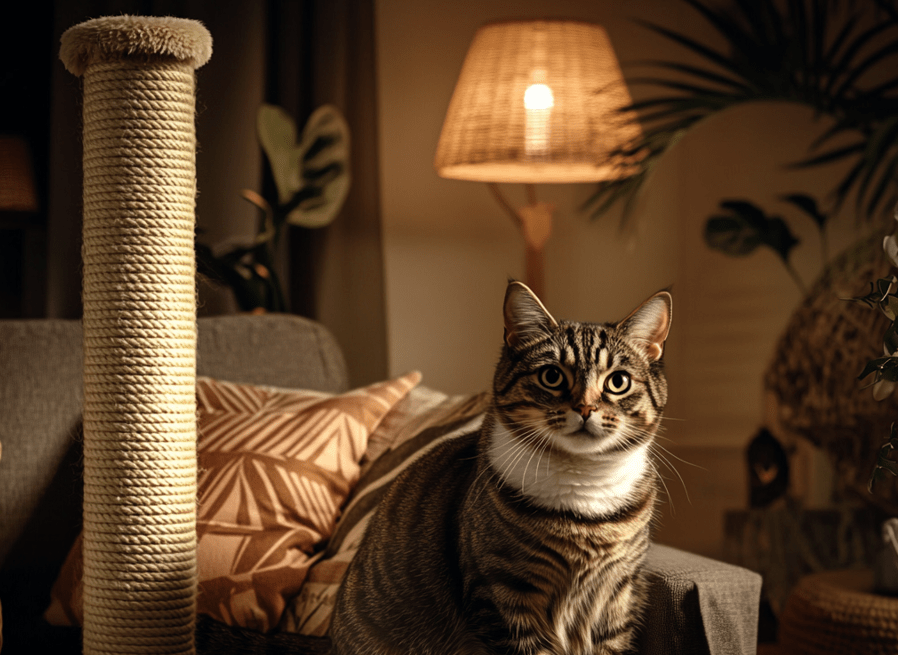
Myth 1: Only Male Cats Get Urinary Issues. While males are more prone to blockages due to their narrow urethra, females can also develop UTIs, stones, and FLUTD.
Myth 2: Dry Food Causes Urinary Problems. Dry food alone isn’t the culprit, but low-moisture diets can contribute if hydration isn’t addressed.
Myth 3: Urinary Issues Always Resolve on Their Own. Most conditions require veterinary intervention to prevent complications.
Myth 4: Cats Don’t Need Water if They Eat Wet Food. Even with wet food, fresh water is essential for optimal urinary health.
Understanding the facts empowers you to make informed decisions for your Domestic Shorthair.
When to Seek Emergency Care
Some urinary symptoms require immediate action. Rush your Domestic Shorthair to the vet if you notice:
Inability to Urinate: Especially in male cats, this could indicate a life-threatening blockage.
Severe Pain: Crying, trembling, or extreme lethargy suggest serious discomfort.
Blood in Urine with Vomiting: This could signal systemic illness or kidney issues.
Collapse or Weakness: These are signs of advanced complications.
Prompt care can save your cat’s life, so don’t hesitate to act.
Living with a Domestic Shorthair Prone to Urinary Issues
If your Domestic Shorthair has a history of urinary problems, long-term management is key. Here’s how to adapt:
Consistent Monitoring: Track urination habits, appetite, and behavior daily.
Customized Care Plan: Work with your vet to adjust diet, medications, or lifestyle as needed.
Supportive Environment: Minimize stress and maintain a routine to keep your cat comfortable.
Community Support: Join online forums or local groups for cat owners to share tips and experiences.
With dedication, you can help your cat manage urinary issues and enjoy a high quality of life.
Conclusion

Urinary tract issues in Domestic Shorthairs are common but manageable with the right knowledge and care. By recognizing early warning signs—like straining, blood in urine, or litter box avoidance—you can act quickly to protect your cat’s health. Preventive measures, such as a balanced diet, ample hydration, stress reduction, and regular vet visits, are your best tools for keeping urinary problems at bay. With love and attention, your Domestic Shorthair can lead a vibrant, healthy life free from the discomfort of urinary tract issues.
For more personalized advice, consult your veterinarian, and always prioritize your cat’s well-being. Share this guide with fellow cat owners to spread awareness and help more Domestic Shorthairs thrive!

